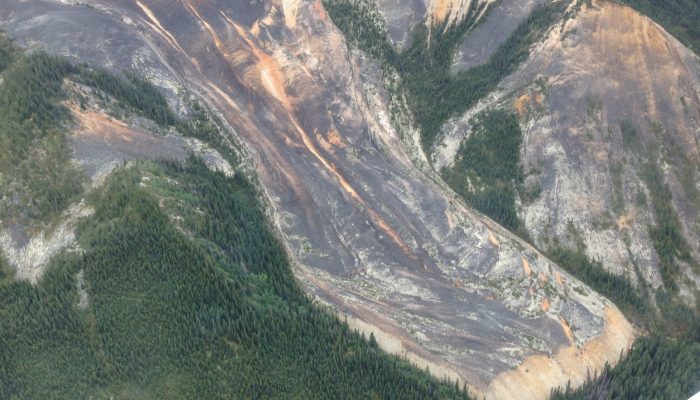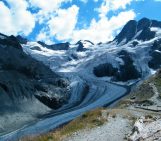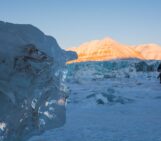
Picture a glacier and you probably imagine a vast, dense mass of slow moving ice; the likes of which you’d expect to see atop the planet’s high peaks and at high latitudes. Now, what if not all glaciers look like that?
Take some ice, mix in some rock, snow and maybe a little mud and the result is a rock glacier. Unlike ice glaciers (the ones we are most familiar with), rock glaciers have very little ice at the surface. Instead, the ice is locked in between the other components, or forms a solid, central structure. Looking at the rock glacier on the flanks of the Heart Peaks shield volcano in northwestern British Columbia (pictured above) you’d be forgiven for thinking this isn’t a glacier at all!
Rock glaciers move down slopes, slowly; typically at speeds which range from a few millimetres per year, up to a few meters. The movement is driven by gravity and usually due to gliding at the base of the glacier, or sometimes due to internal deformation of the ice.
How do the impressive landforms come about? The jury is still out, with the merits of a number of explanations still being debated. Some argue that they are due to geomorphic processes that result from seasonal thawing of snow in areas of permafrost; while others suggest the explanation is simpler: as a glacier wastes, it leaves behind an increasing amount of rock debris as the ice melts. It may be that rock glaciers are the result of a landslide covered glacier melting, or the mixing of a glacier with a landslide it encounters in its way down-slope…
Whatever the exact cause of the rock glacier on the flank of Hearts Peak, it remains a particularly striking example of the landform, given its unusual pink(ish) colour. The dormant volcano is characterised by steep-sided lava domes which are composed of porphyitic rhyolites and, to a lesser extent, trachytic rocks, which give rise to the unusual colouring of this rock glacier.
Imaggeo is the EGU’s online open access geosciences image repository. All geoscientists (and others) can submit their photographs and videos to this repository and, since it is open access, these images can be used for free by scientists for their presentations or publications, by educators and the general public, and some images can even be used freely for commercial purposes. Photographers also retain full rights of use, as Imaggeo images are licensed and distributed by the EGU under a Creative Commons licence. Submit your photos at http://imaggeo.egu.eu/upload/.




Pingback: Geomorphology | The new glacial geomorphological map from New Zealand
Pingback: Cryospheric Sciences | The new glacial geomorphological map from New Zealand